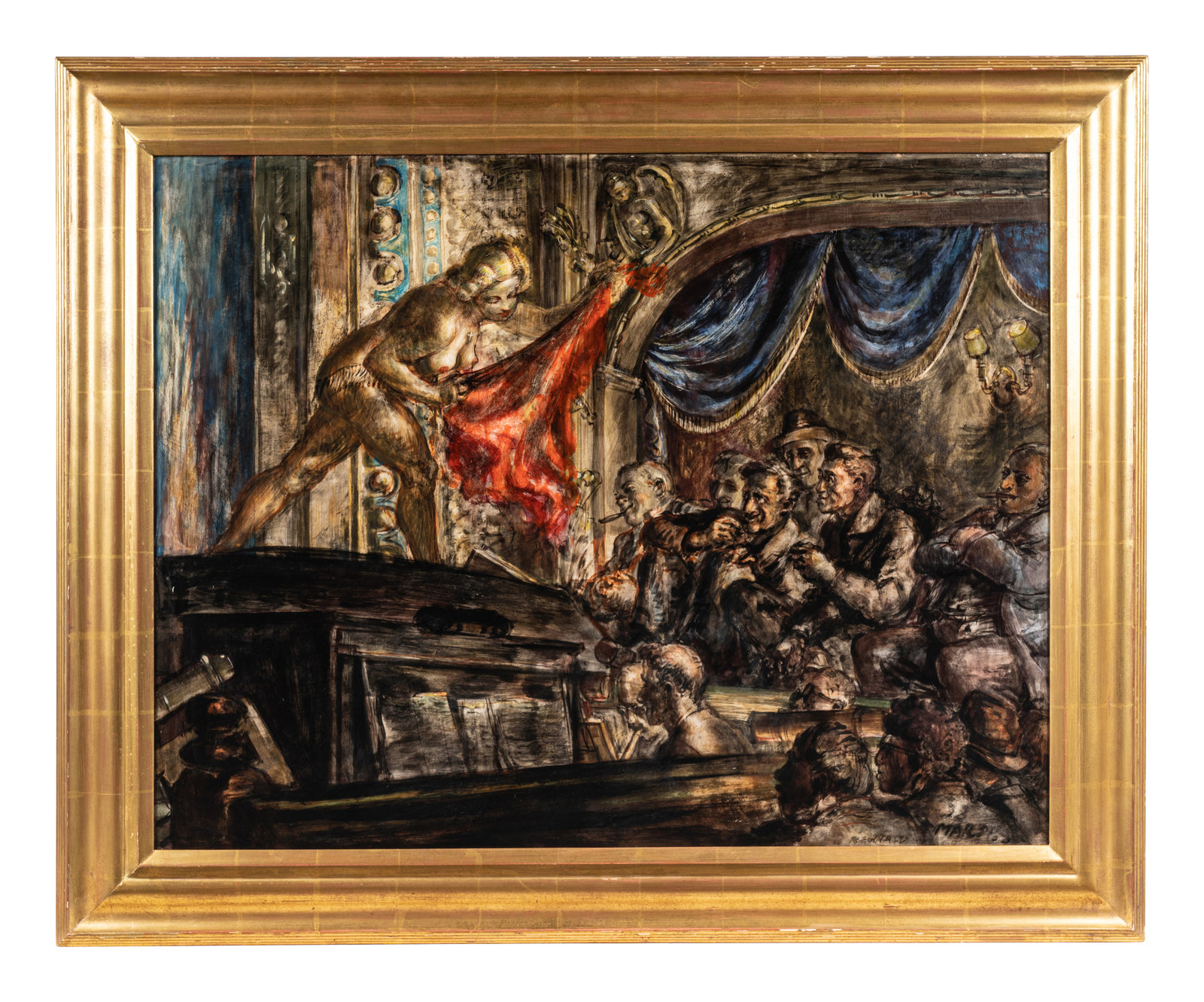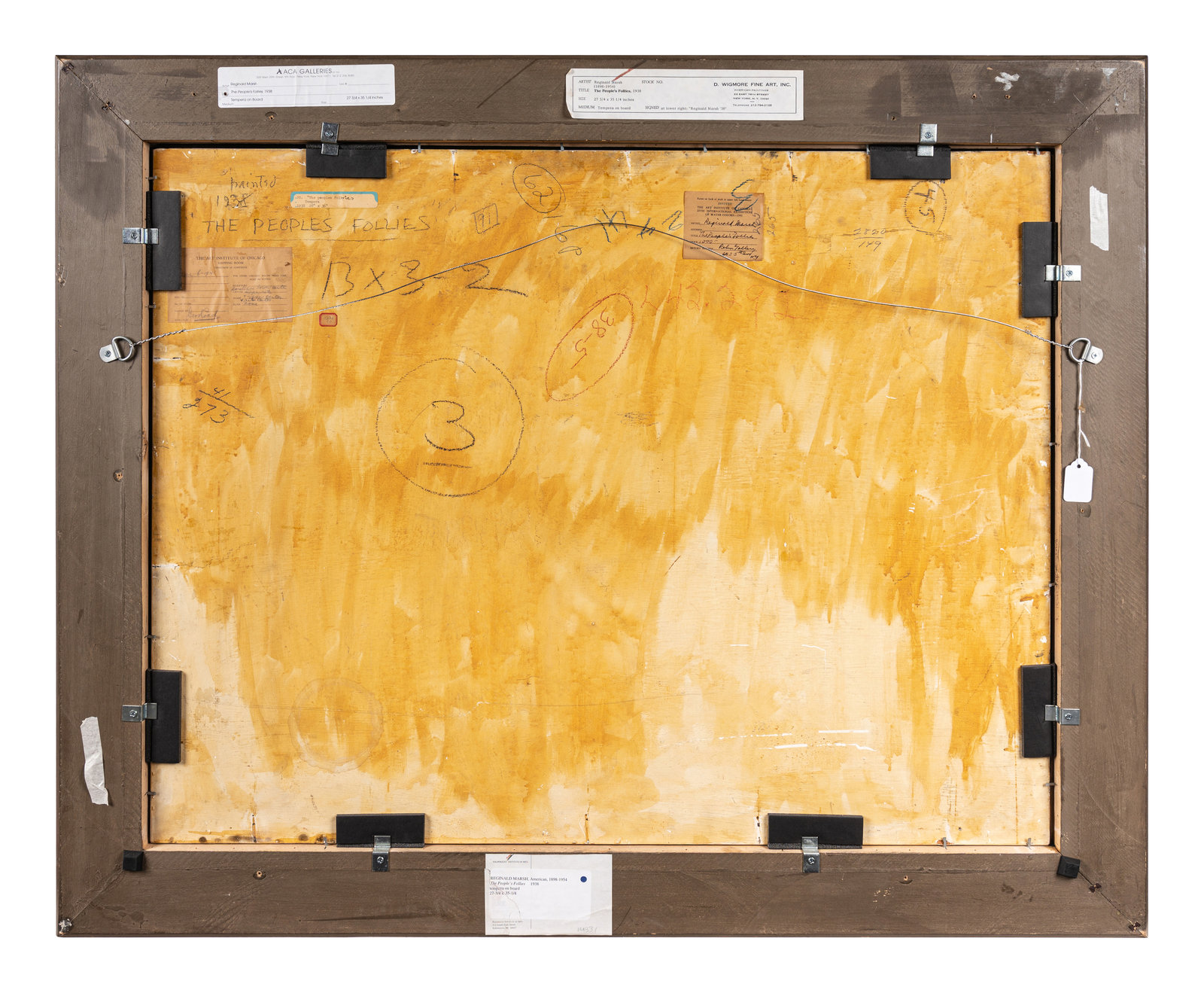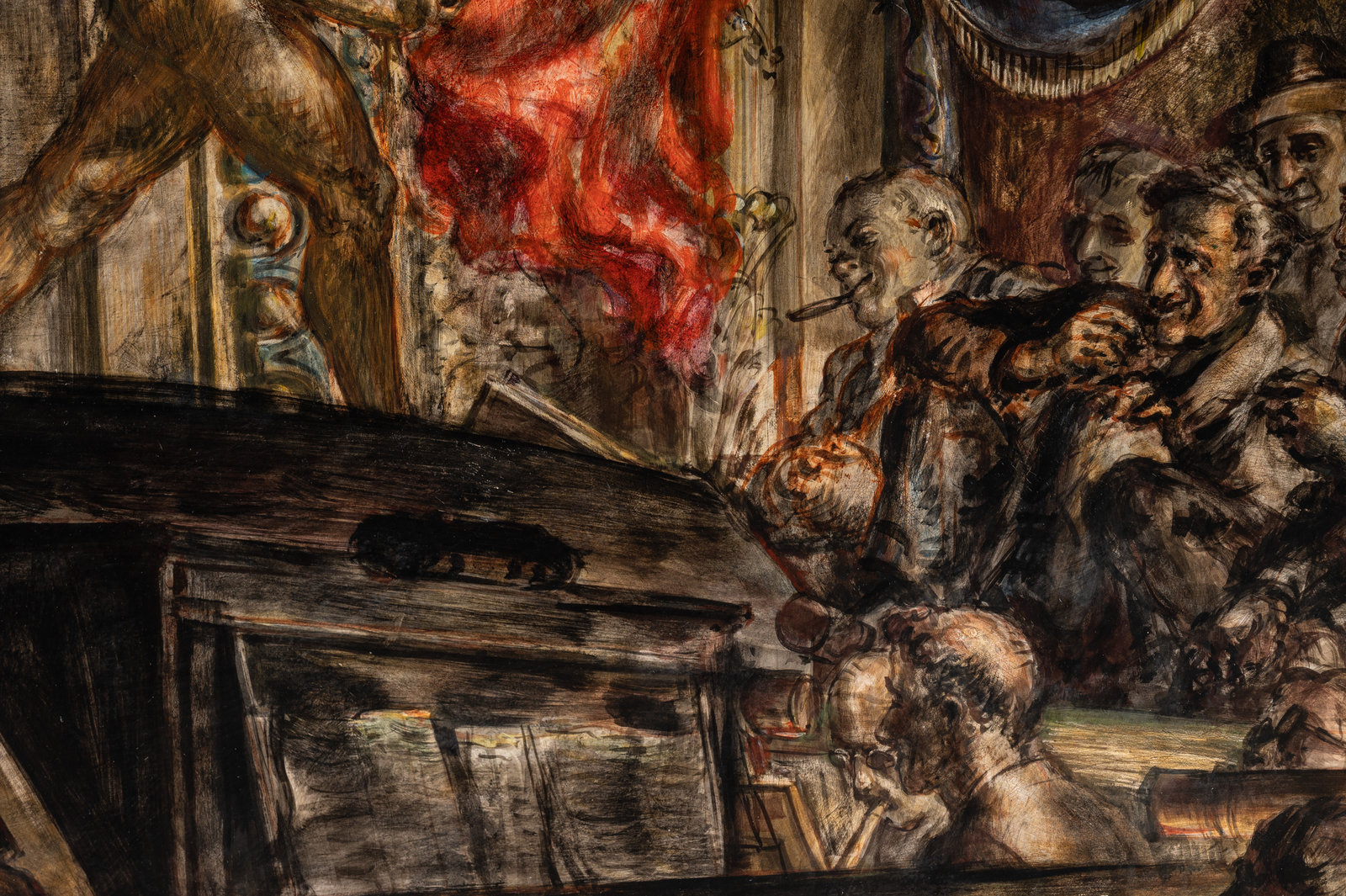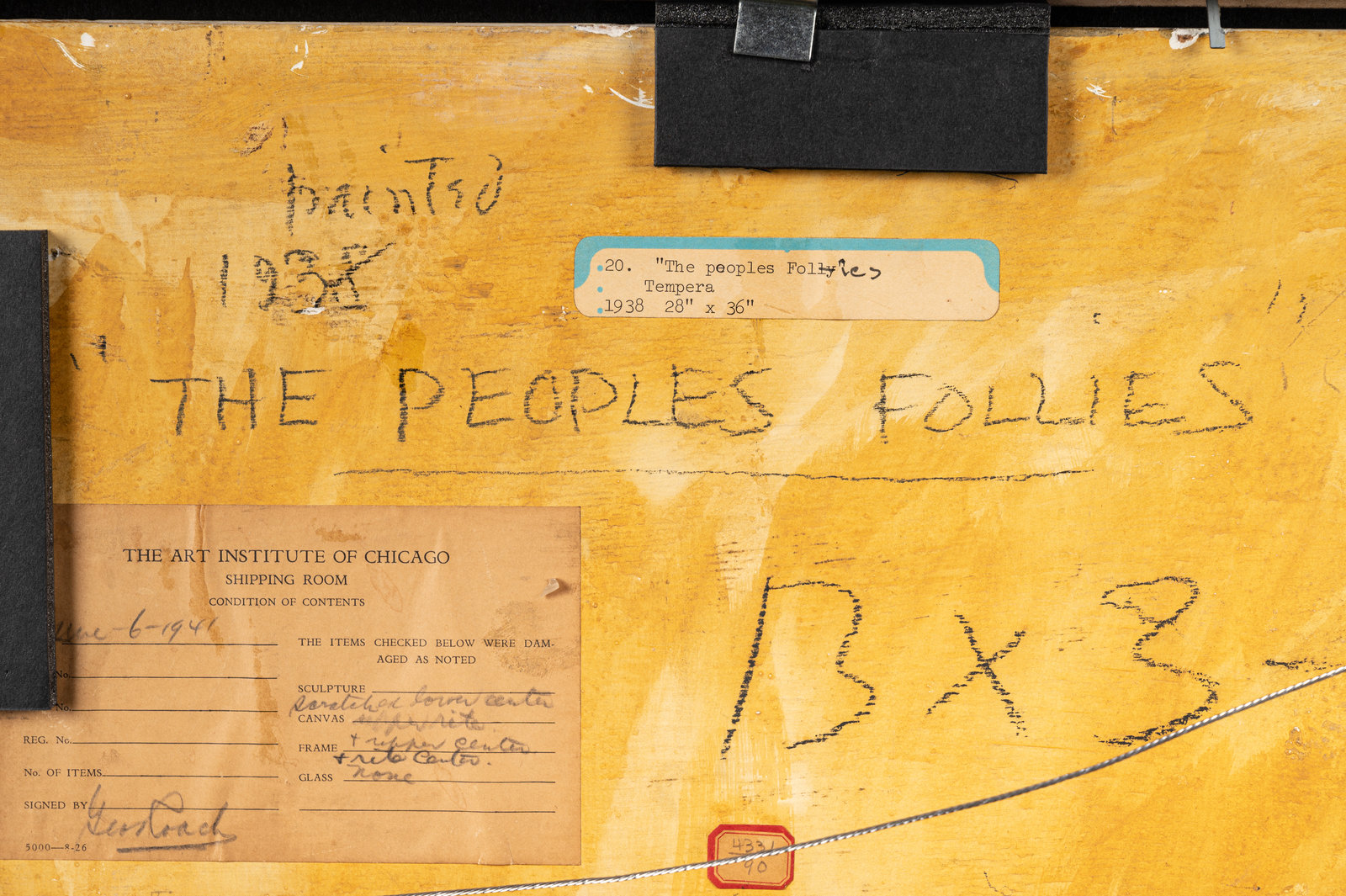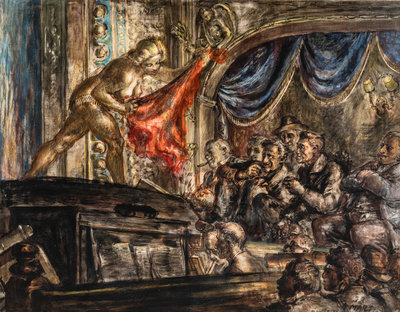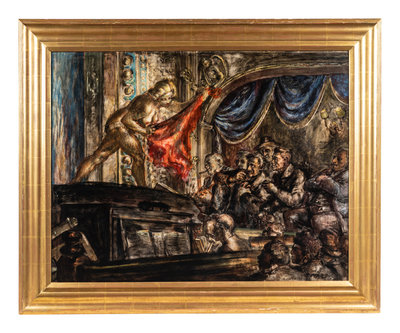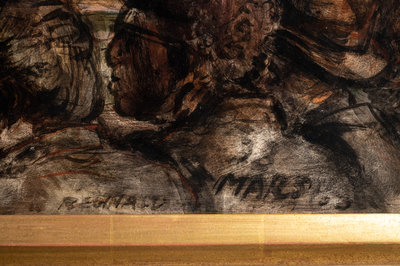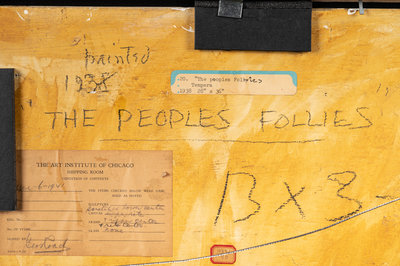Reginald Marsh
(American, 1898-1954)
The People's Follies
, 1938
Sale 972 - American & European Art
Dec 13, 2021
10:00AM CT
Live / Chicago
Estimate
$100,000 -
$150,000
Item was unsold
Lot Description
Reginald Marsh
(American, 1898-1954)
The People's Follies
, 1938tempera on paper laid to board
signed Reginald Marsh and dated (lower right)
28 x 36 inches.
Provenance:
The Artist
Senator William Benton, Connecticut
Thence by descent in the family
D. Wigmore Fine Art, New York
Acquired directly from the above by the present owner, 1996
Exhibited:
Chicago, Art Institute of Chicago, 20th International Exhibition of Water Colors, July 17 – October 5, 1941, no. 396
Bridgeport, Connecticut, Sacred Heart University, Library Gallery, Senator William Benton Collection, May 14 – June 20, 1972
Lot note:
A recorder of urban life during the early 20th century, Reginald Marsh turned his unflinching eye to the plebian, often gritty, views of New York. In burlesque scenes like The People’s Follies, 1938, he captured the jaded women gyrating for the everyday joe and pompous businessmen alike. In a review of the 1955 Whitney Museum retrospective on the artist, art critic Emily Genauer stated "It was its people-and in their least attractive aspects-who fascinated him. For material he had only to…attend the city's burlesque shows (which he followed to Jersey City when they were banned in New York in 1937), and paint both the bored and faceless strippers and the leering, gaping audience...None of this made for pretty pictures. But because Marsh was such an extraordinary craftsman...his work radiates vitality. His over-ripe girls burst through their clothes and even their skin..." (“Marsh Our Hogarth, Museum Show Proves,” New York Herald Tribune, p. 5, https://www.aaa.si.edu/collections/frank-k-m-rehn-galleries-records-9193/subseries-4-1/reel-5870-frames-971-1052, accessed 27 October 2021).
After graduating from Yale in 1920, Marsh moved to New York and worked as a freelance commercial artist, until he was hired by the New York Daily News in 1922. The young artist covered the vaudeville beat, which was an early introduction to the seedy underground of the city. In 1925, Marsh traveled to Paris with his first wife, where he encountered the Baroque style that resulted in a definitive shift in his artistic approach. Returning from Europe in 1926, the artist enrolled in classes at the Art Students' League in New York, where his instructors included the Ashcan School painters, John Sloan and George Luks. Their social realist views came to exert an important influence on his art; however, Marsh preferred to avoid direct political entanglements and made his opinions known through his satirical sketches.
Marsh’s study of the Old Masters, in particular Michelangelo, Raphael, and Rubens, helped him discover how to organize multiple, strongly modeled figures in rhythmic compositions full of movement. He used these devices to document the urban population's pursuit of pleasure and exhibitionism in his burlesque subjects. In The People’s Follies, the voluptuous dancer is high above her audience and leans towards them suggestively. She is highlighted by an unseen spotlight and the red cloth she holds further leads all eyes toward her rounded, fleshy limbs. A blue-curtained arch encompasses a group of onlookers on the right, who stare upward at the woman appreciatively and with varying degrees of intensity. Marsh’s use of Old Master arrangements, originally developed to dramatically portray Biblical and mythological tales, turns a profane and tawdry vision into a frank testament of the particular brashness of the human spirit in 1930s New York.
Condition Report
The physical condition of lots in our auctions can vary due to
age, normal wear and tear, previous damage, and
restoration/repair. All lots are sold "AS IS," in the condition
they are in at the time of the auction, and we and the seller make
no representation or warranty and assume no liability of any kind
as to a lot's condition. Any reference to condition in a catalogue
description or a condition report shall not amount to a full
accounting of condition. Condition reports prepared by Hindman
staff are provided as a convenience and may be requested from the
Department prior to bidding.
The absence of a posted condition report on the Hindman website or
in our catalogues should not be interpreted as commentary on an
item's condition. Prospective buyers are responsible for
inspecting a lot or sending their agent or conservator to inspect
the lot on their behalf, and for ensuring that they have
requested, received and understood any condition report provided
by Hindman.
Please email conditionreports@hindmanauctions.com for any additional information or questions you may have regarding this lot.

